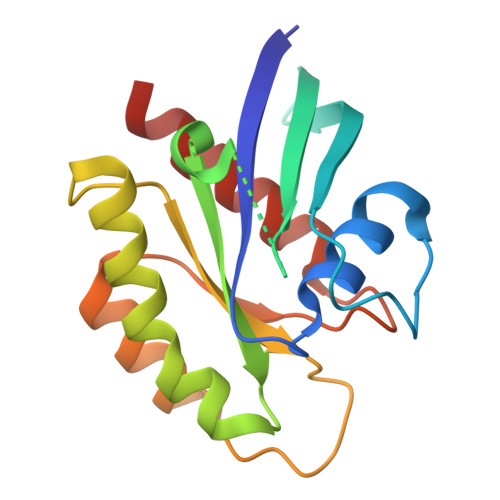Comprehensive structure-function analysis reveals gain- and loss-of-function mechanisms impacting oncogenic KRAS activity.
Kwon, J.J., Dilly, J., Liu, S., Kim, E., Bian, Y., Dharmaiah, S., Tran, T.H., Kapner, K.S., Ly, S.H., Yang, X., Rabara, D., Waybright, T.J., Giacomelli, A.O., Hong, A.L., Misek, S., Wang, B., Ravi, A., Doench, J.G., Beroukhim, R., Lemke, C.T., Haigis, K.M., Esposito, D., Root, D.E., Nissley, D.V., Stephen, A.G., McCormick, F., Simanshu, D.K., Hahn, W.C., Aguirre, A.J.(2024) bioRxiv
- PubMed: 39484452
- DOI: https://doi.org/10.1101/2024.10.22.618529
- Primary Citation of Related Structures:
9C3K, 9C3L, 9C3M, 9C3N, 9C3Q, 9C3R, 9C3V, 9C3Z, 9C40, 9C41, 9C43 - PubMed Abstract:
To dissect variant-function relationships in the KRAS oncoprotein, we performed deep mutational scanning (DMS) screens for both wild-type and KRAS G12D mutant alleles. We defined the spectrum of oncogenic potential for nearly all possible KRAS variants, identifying several novel transforming alleles and elucidating a model to describe the frequency of KRAS mutations in human cancer as a function of transforming potential, mutational probability, and tissue-specific mutational signatures. Biochemical and structural analyses of variants identified in a KRAS G12D second-site suppressor DMS screen revealed that attenuation of oncogenic KRAS can be mediated by protein instability and conformational rigidity, resulting in reduced binding affinity to effector proteins, such as RAF and PI3-kinases, or reduced SOS-mediated nucleotide exchange activity. These studies define the landscape of single amino acid alterations that modulate the function of KRAS, providing a resource for the clinical interpretation of KRAS variants and elucidating mechanisms of oncogenic KRAS inactivation for therapeutic exploitation.
- Department of Medical Oncology, Dana Farber Cancer Institute, Boston, MA, 02115, USA.
Organizational Affiliation:


















